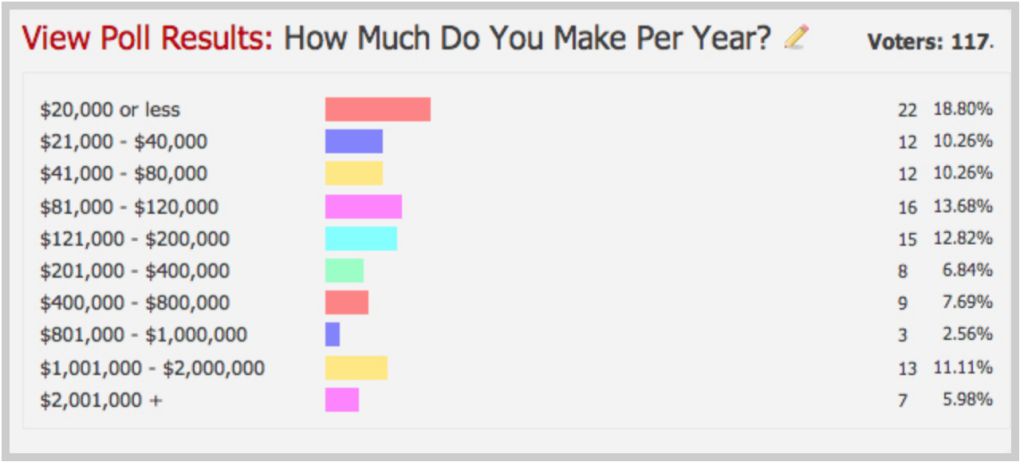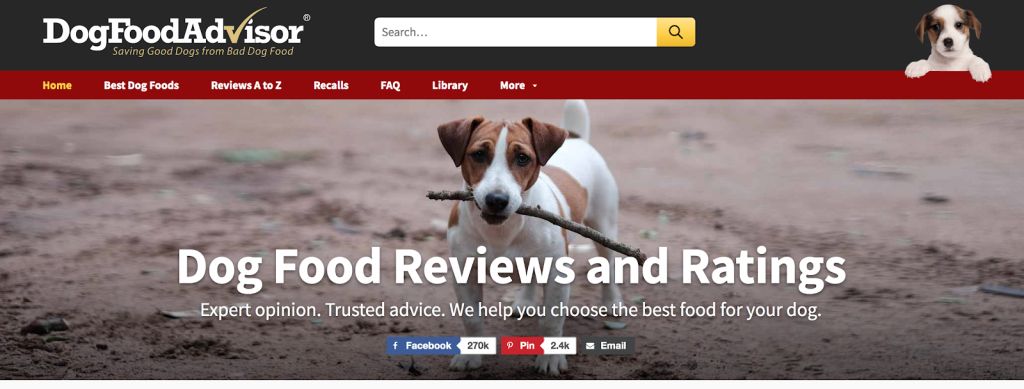Before we dive into this article, let’s get a solid understanding of what content marketing is. To sum it up, content marketing is strategic content creation and distribution with the overall goal of attracting a target audience and encouraging customer action.

Content made with this purpose should always be relevant to the niche and valuable to the customer. In fact, according to the Content Marketing Institute, content marketing simply isn’t possible unless you have quality content.
This shouldn’t come as a surprise, considering the fact that content is the driving force behind this marketing strategy. So, what are the different types of content marketing? Here are the most popular forms of content marketing used today:
- Blogs: This is probably the most common form of content marketing. Blogs are an easy and affordable way to get into content marketing. The best part is, starting a blog can be done in a few simple steps.
- Videos: Video creation takes a little more time and skill, but it’s a great way to reach a wider audience.
- Infographics: Sometimes long blog posts are a lot to digest. Infographics draw people in with engaging visuals that are easy to understand.
- eBooks: eBooks are a key resource for content marketers. Offering an eBook in exchange for contact information is a great way to build an email list.
- Social media posts: Posting on social media is a great way to connect directly with the target audience. It’s also another very affordable way to start content marketing.
Now that you have a good idea of what this marketing strategy entails, let’s talk about why content marketing is important for the success of a business. Content marketing is important because it allows you to gain the audience’s trust, increase your authority and generate leads. Best of all, it can cost little to no money to get started.
It’s clear that business should be utilizing content marketing to generate leads, but why is it an important strategy for affiliate marketers? The answer is simple. As an affiliate marketer, you make money every time someone uses your affiliate link to purchase a product. If businesses can attract the target audience to their own products, why can’t you do the same?
Content marketing can provide affiliate marketers with an affordable and highly effective way to boost your affiliate conversion rate. In addition, great content will increase your authority and help you earn the trust of your visitors.
So how much money can you make with content marketing as an affiliate marketer? First, let’s get one thing straight — content marketing is not a way to get rich quick. The reality is that content marketing is a long-term strategy. However, if you’re ready to put in the time and effort, content marketing can be incredibly lucrative.
When it comes to money, numbers talk, so let’s take a look at some statistics. A survey from STM Forum reveals the salaries of 117 affiliate marketers:

A closer look at this survey shows that 34.2% of the affiliate marketers who responded made between $20,000-$80,000 a year. Now, if you consider the fact the businesses who blog consistently get 5x more traffic than those who don’t, it’s clear that content marketing can only increase your income.
Convinced yet? Let’s jump into the ins and outs of content marketing and how you can get started as an affiliate marketer.
Table of Contents
How do Content Marketing and SEO relate?
You now understand what content marketing is, but what is SEO and how does it relate? SEO or search engine optimization is the process of attracting the maximum amount of quality visitors to your site. This is done by increasing your rank on a search engine results page.
SEO encompasses several factors but keywords are essential to the process. Incorporating the correct keywords is crucial to ranking higher. This is where content marketing comes in.
Quality content is used to incorporate keywords on your site. This not only helps the site rank higher, but it also attracts the target audience to a product or service. On the flip side, without SEO, your content may never reach the intended audience.
When you start creating content for your site, it’s absolutely necessary to use keywords that will attract the right audience. That means using relevant, influential keywords and phrases. Ideally, your content is answering a question, solving a problem or guiding the reader. At its core, your content should provide genuinely useful information.
If you’re wondering how to use the right keywords, using a keyword research tool can help as you begin content creation. These tools will ensure that your content is optimized so that it effectively reaches the right people. Check out Ahrefs or SurferSEO to get started.
How can affiliate marketers use content marketing?
As an affiliate marketer, your goal is to get people to click that link and make a purchase. Creating optimized content is going to lure the people most likely to buy the product. Content marketing is one of the best ways to attract an audience to your affiliate products with little to no cost to you.
Content marketing will help further define your niche. As you choose affiliate products, it’s important to choose products that represent your overall brand. They should all fit into the same category, whether it be lifestyle, fitness or cooking. Along the same line, your content should represent your chosen niche as well. By strengthening your niche your site can become the go-to place for answers.
So, what does this actually look like? Blogging is one of the best ways to incorporate content marketing into your overall strategy. Affiliate markers can write blog posts reviewing products, comparing products or providing essential information about products or services.
You may have guessed it, but these products should be in your arsenal of affiliate links. The more trustworthy and valuable your audience finds you, the more likely they are to purchase that product. One great example of this can be found on Dog Food Advisor.

This blog has successfully stuck to a niche and created lots of highly informative content. You’ll notice that they’ve almost exclusively stuck to reviews. It should be no surprise that these reviews include links to their affiliate products.
You can get started as an affiliate marketer by joining an affiliate network. These networks have a wide selection of brands and products to choose from. Remember to stick to your niche when selecting products. You can also apply to an affiliate program like Amazon Associates or Target Affiliates to work directly with a company.
What are the downsides of content marketing?
As they say, nothing is perfect, so what are the downsides of content marketing? Here are some things to be aware of as you get started:
- Legal issues: You can run into unfortunate legal trouble if you don’t create your own content or if you use images without permission.
- It takes a long time: As I mentioned before, this is a marathon, not a sprint. You’ve got to be in it for the long haul to see a profit.
- It can be expensive: If you don’t do it right, content marketing can cost a pretty penny. It’s smart to start off with cost-effective content, like blogs, in the beginning.
- It’s competitive: There are a lot of people in the game, so it’s that much more important to find your niche, research your audience, and provide tailored content.
How to get started with Content Marketing
It’s time to talk about how to get started with content marketing as an affiliate marketer. Here are some tips for successfully implementing content marketing into your strategy:
1. Start a blog:
While it’s certainly important to diversify your content with videos, eBooks, and social media posts, blogs are an affordable, accessible and effective way to start. Blogging helps SEO which in turn, attracts the intended audience to your affiliate links.
The other benefit of a blog is that it establishes trust between you and the audience. If you provide them with valuable information, they’ll turn to your blog for advice. The more trust you earn, the more likely your audience is to trust the product you’re affiliated with.
Lastly, blogging allows you to stay relevant in your niche and provide content on a consistent basis. Unlike videos or eBooks, you can upload blog posts multiple times a week. Blogging should be the cornerstone of your content marketing strategy.
This infographic from Lyfe Marketing demonstrates exactly why blogging is so beneficial. A closer look reveals that companies with blogs have 97% more inbound links. That’s a pretty impressive statistic.

2. Use WordPress:
The other obvious benefit of blogging is the cost. Using a site like WordPress allows you to start your blog for free. WordPress can help you get a blog up and running in minutes. They offer beautiful templates, custom domain names, and secure web hosting.
WordPress also provides users with 24/7 live chat, email and support pages to help you with any technical issues or questions you may have. Statistics and analytics will give you a real idea of your blog’s progress and audience activity. These are just a few of the awesome features you’ll get with WordPress.
3. Research the competition:
Forming your strategy should include thorough research on the competition. See who they’re targeting and what they’re audience looks like. Are they missing a key demographic? Use this information to further refine your niche and fill any gaps that you see.
Researching your competition can also give insight into trending topics. If there are certain topics being addressed by your competition, try to formulate content that’s better informed and more unique. Again, you should be looking for questions that your competition hasn’t answered so that you provide new, valuable content.
4. Conduct keyword research:
As you’re researching the competition and looking at trending topics, look for the keywords and phrases used. The smartest thing to do here is to aim for keywords that your competition is not ranking for. This gives you the advantage.
Next, think about the types of questions and concerns your target audience has. The words and phrases associated with these questions should guide your keyword research.
I’ve already mentioned it but keywords research tools will be your best friend. These tools will help you understand the most important factors associated with keywords and how you can optimize your content.
One important factor to consider is search volume. Search volume refers to the number of times a keyword is searched every month. Words with high keyword volumes are typically more competitive and harder to rank with. Finding keywords with good search volume but that is still fairly specific should be the goal.
It’s highly unlikely that you’re going to rank with a single word like “workout” or “boots.” Keywords like these have an incredibly high search volume, making it near impossible for a new blog to rank using them.
When you do your keyword research, don’t be afraid to use keywords with a lower search volume. These often convert better because they address specific searches.
5. Explore different SEO content strategies:
When it comes to blogs there are several strategies you can use to approach content creation. Here are a few great ways to create blog posts that incorporate your affiliate links:
- Informational articles: These posts should inform the audience of a specific topic, product or service.
- How To’s: How To articles are great because it gives you the opportunity to directly solve a problem.
- Roundup reviews: Articles that review a selection of similar products are perfect for affiliate marketers.
- Alternative To’s: These posts list a series of products that are alternative to a popular product.
- X vs. Y: Compare and contrast two products or services
- Single reviews: Write a well-researched, detailed post reviewing a single product.
All of these strategies can be used to incorporate affiliate links. The best part is, by using blog posts, you’re attracting the exact audience that is interested in the products. This increases the likelihood of conversions and return visitors.
6. Develop great content and acquire backlinks:
This may seem obvious, but the quality of your content matters immensely. That includes everything right down the title and the sub headers. Each aspect of your post affects your rate of success.
Remember, your audience is more likely to click on your website if the article looks like it answers their search query. Once they’re on the site, your blog post needs to be organized correctly. If it’s messy and overwhelming, chances are they’ll leave the page.
Most importantly, you need to create content that is truly valuable. Yes, that means more research on your end. Even though you may be writing from personal experience, it helps to incorporate peer-reviewed data into your work. Graphs and surveys convey a lot of information and give credibility to your content.
Making excellent content takes more work, but in the end, it’s worth it. That’s because when you provide high-tier blog posts, other posts will reference your work with a backlink.
A backlink is a link from one site to another site. Search engines, like Google, incorporate backlinks into their ranking signals. That means when your page is backlinked, it boosts your ranking, makes your post more visible and earns you more traffic.
Final Thoughts
Content marketing has brought countless benefits to the companies that employ this strategy. As an affiliate marketer, you can use these tips to do the same. Content marketing brings in the audience who is most likely to use your affiliate links and purchase the product.
While this strategy does require a time investment, it’s a smart financial decision. At the end of the day, content marketing is arguably the best way to boost your traffic, increase your conversions and become a more successful affiliate marketer.
Jon is a content marketing expert and founder of jontorres.com, a blog dedicated to teaching others about affiliate marketing and SEO. Jon writes about his experience in web-based entrepreneurship and digital marketing.